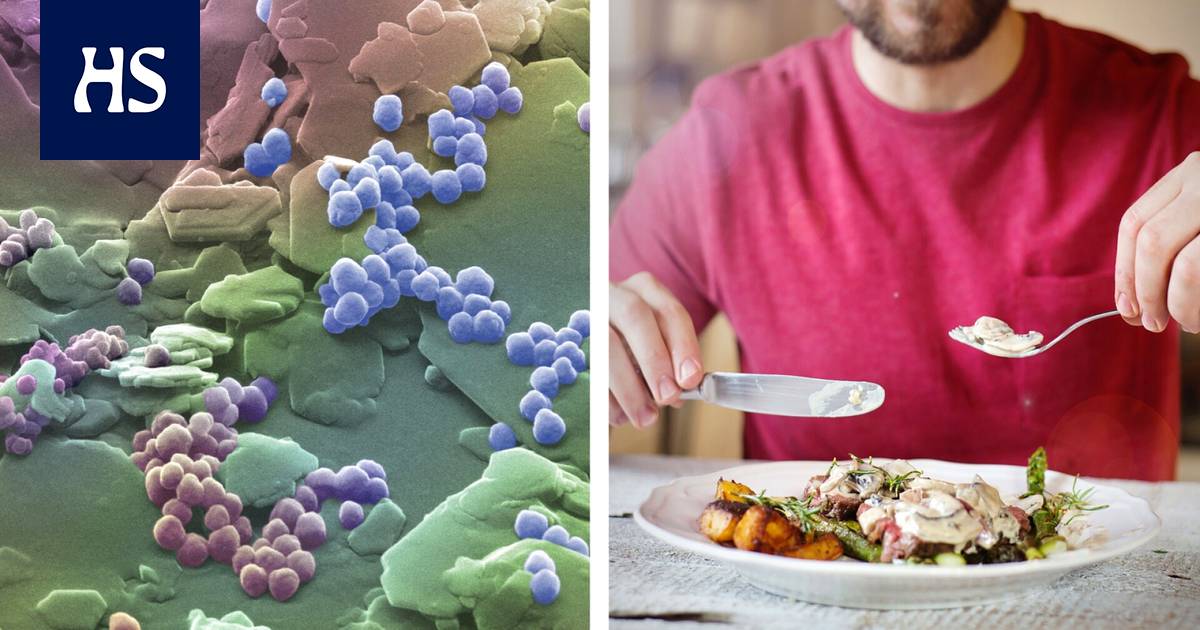So so-called microplastics are a growing problem. The world produces and consumes such huge amounts of plastic that, in addition to the waste problem, small plastic particles are released into the environment from plastics and plastic fibers.
Plastic flakes are everywhere. It has even been found From Antarctic snow and of human blood.
Plastic also gets into our food. It has been estimated that up to hundreds of thousands of tons of microscopic plastic chips would end up in European fields every year, carried by wind and water.
Eastern Finland the university has now shown how plastic travels from plants to fish.
In the study, lettuce was grown in soil that had been seeded with very small plastic particles. The lettuce was fed to the fly larvae and these larvae were then fed to the fish. Plastic particles were eventually found in the fish’s body.
The study looked at nanoscale plastic particles even smaller than microplastics.
A nanometer is a millionth of a millimeter, while a micrometer is a thousandth of a millimeter. Nanoplastic is already so small that it can easily be carried into the body of organisms. However, it is very difficult to find in tissue samples.
Doctor of research Fazel Monikh utilized a clever method in tracking plastic. The 250 nanometer plastic particles were chemically labeled with gadolinium. It is a rare element that normally does not reach much in organisms.
If gadolinium was found in the tissue samples, it would be a sure sign that these tissues contain nanoplastics.
As a side note, gadolinium is named after a Finnish chemist and physicist by Johan Gadolin (1750–1852) according to
In the first one In the first phase, the researchers grew lettuce in soil in which they had sown billions of spherical and vanishingly small polystyrene and PVC particles. So there was quite a lot of plastic: one hundred milligrams in every kilogram of soil.
Lettuce was grown for two weeks, then fed to black soldier fly larvae. Then these larvae were further fed to roach fish that had been caught from Joensuu’s Pyhäselka. The roaches pop the fly larvae in the aquarium for five days.
The roach is an excellent research organism here, because it also eats insects in the wild and its tissues are easy to slice for examination.
“
It is not known whether nanoplastics are harmful to the body.
Under the scanning electron microscope, it became clear that, first of all, the plastic particles had entered the lettuce through the root system.
Nanoplastics had also migrated and accumulated in the leaves. Furthermore, the nanoparticles were transported into the larvae’s body and eventually the plastic ended up in the liver, gills and intestinal tissues of the roach.
However, no plastic was found in the roaches’ brains.
“The blood brain barrier is a possible explanation for this”, thinks the professor who led the research Jussi Kukkonen from the University of Eastern Finland.
The capillary cell of the brain prevents many harmful substances from entering the central nervous system.
Is not knownhow nanoplastics affect the body and whether they are harmful.
In the study, the roaches that ate the larvae covered with plastic did not behave differently compared to the controls.
Research still shows that plastic travels up the food chain. With the same mechanism, it could also end up in the human body from food. However, the plastic bags were not fed to humans as a test.
“Nanoplastic particles in the soil are a potential health risk for plant-eating organisms and humans, if our results prove to be generalizable to other plants, crops and arable land,” says Fazel Monikh, lead author of the study.
Previously, he has shown that nanoplastics can accumulate in the aquatic environment in algae and the water fleas that eat it.
Finland The Academy-funded Microplastics in Suomen water bodies project between 2016 and 2020 found out that there are microplastics in fish in the surface waters of the Baltic Sea and Kallavesi in nature. There are such small amounts of them that at least because of that there is no need to limit fish consumption.
Another research project is also underway at the University of Eastern Finland, which investigates whether microplastics are released from food packaging.
A recent study was published Nano Today – science journal.
#Environment #Nanoplastics #travel #plants #fish #humans #Finnish #study #showed #plastic #moves #food #chain








